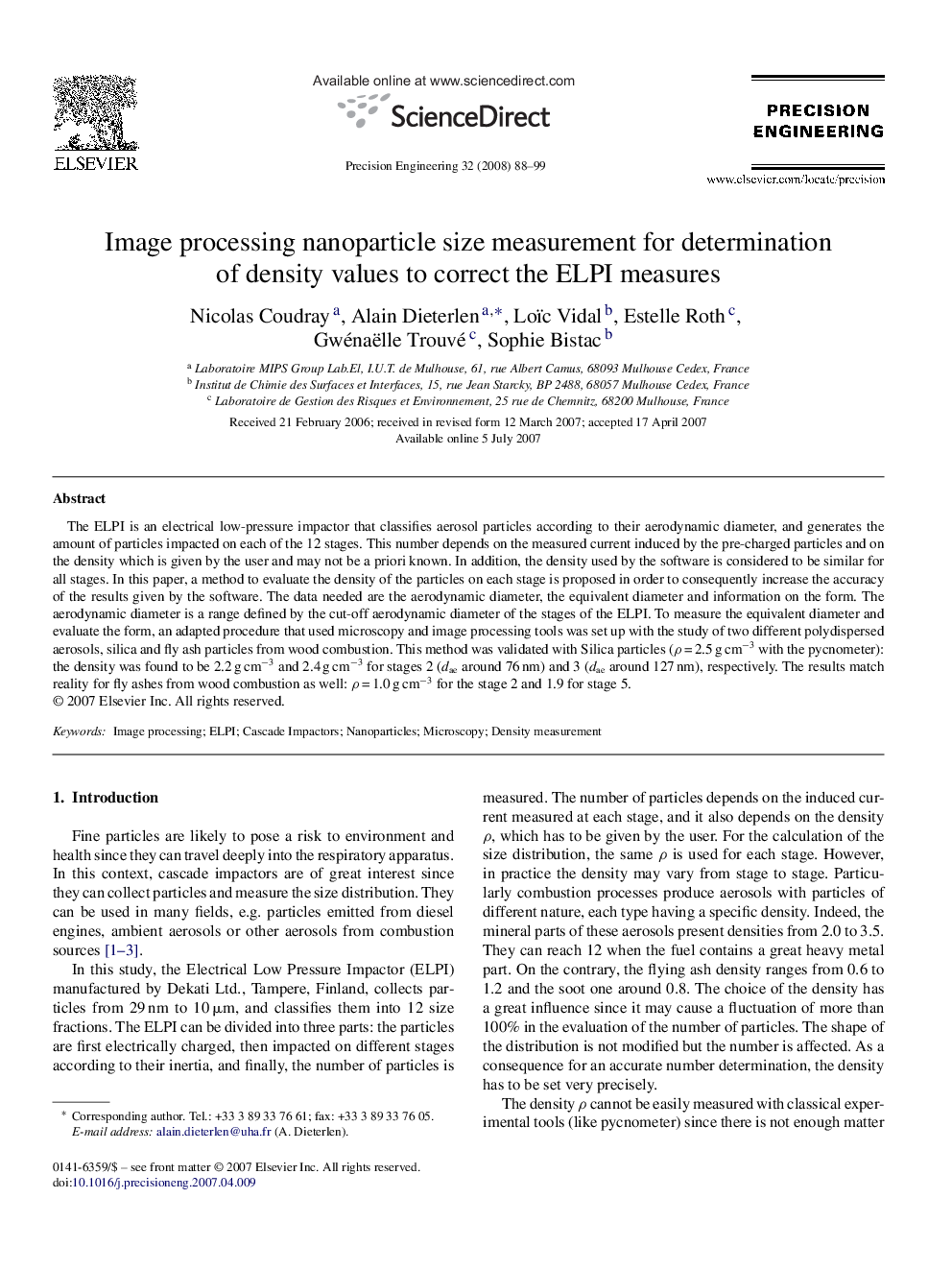| Article ID | Journal | Published Year | Pages | File Type |
|---|---|---|---|---|
| 804738 | Precision Engineering | 2008 | 12 Pages |
The ELPI is an electrical low-pressure impactor that classifies aerosol particles according to their aerodynamic diameter, and generates the amount of particles impacted on each of the 12 stages. This number depends on the measured current induced by the pre-charged particles and on the density which is given by the user and may not be a priori known. In addition, the density used by the software is considered to be similar for all stages. In this paper, a method to evaluate the density of the particles on each stage is proposed in order to consequently increase the accuracy of the results given by the software. The data needed are the aerodynamic diameter, the equivalent diameter and information on the form. The aerodynamic diameter is a range defined by the cut-off aerodynamic diameter of the stages of the ELPI. To measure the equivalent diameter and evaluate the form, an adapted procedure that used microscopy and image processing tools was set up with the study of two different polydispersed aerosols, silica and fly ash particles from wood combustion. This method was validated with Silica particles (ρ = 2.5 g cm−3 with the pycnometer): the density was found to be 2.2 g cm−3 and 2.4 g cm−3 for stages 2 (dae around 76 nm) and 3 (dae around 127 nm), respectively. The results match reality for fly ashes from wood combustion as well: ρ = 1.0 g cm−3 for the stage 2 and 1.9 for stage 5.
